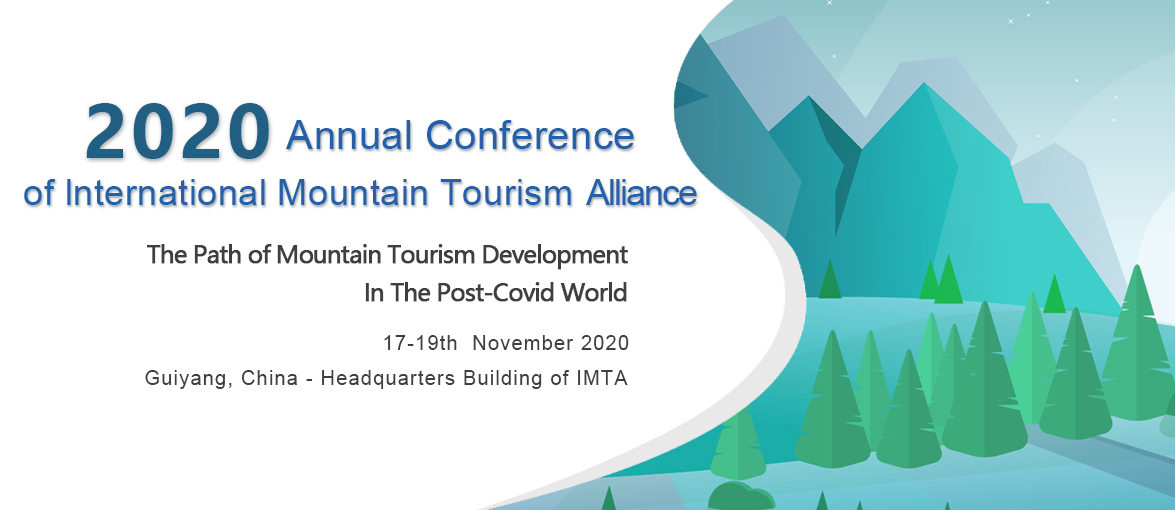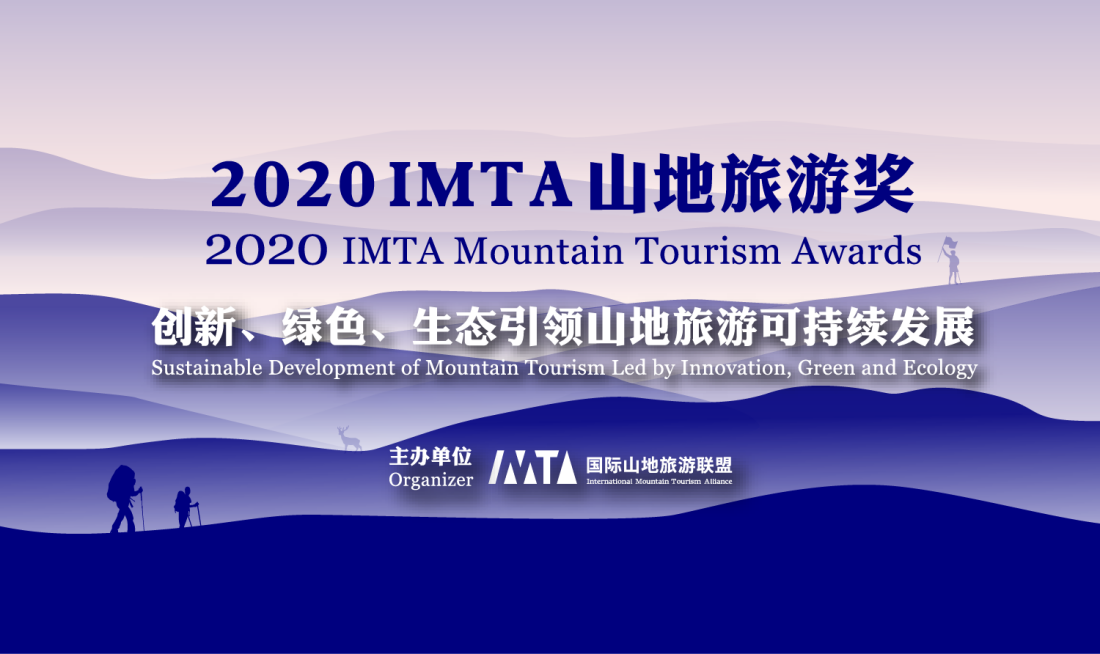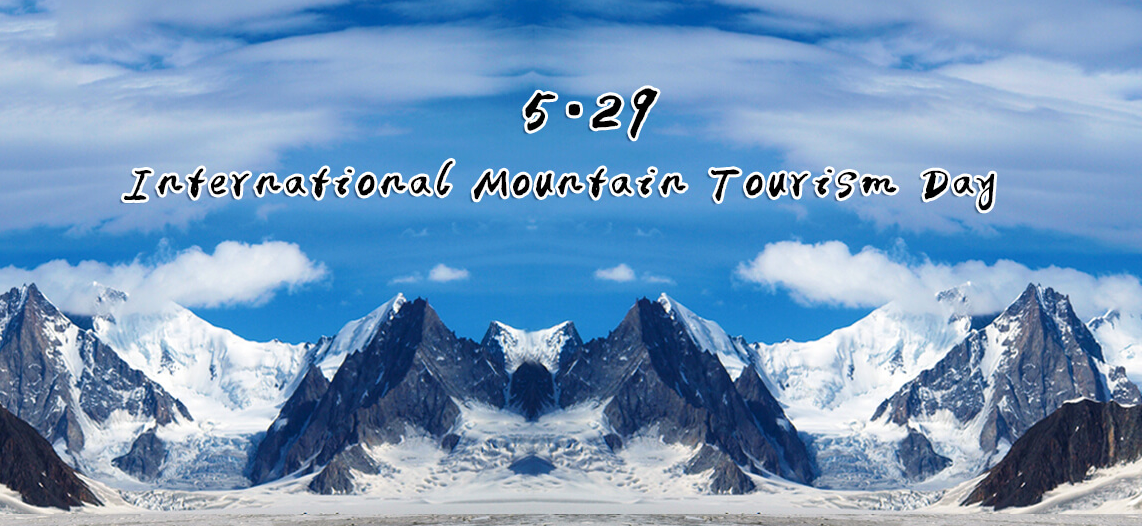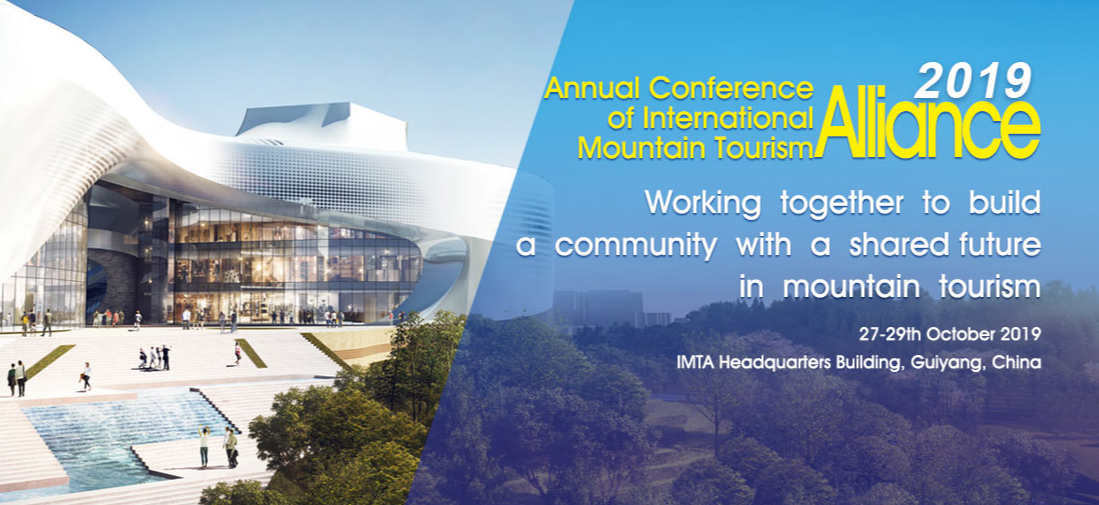EDITOR'S NOTE: On May 29 2021, the main activity of the third International Mountain Tourism Day—the World Heritage Famous Mountain (Jinfo Mountain) Summit kicked off in Nanchuan District, Chongqing Municipality, China successfully. Themed with “World Heritage Protection and Green Development of Mountain Tourism”, the Summit got strong support from the World Tourism Organization (UNWTO), the World Intellectual Property Organization (WIPO), the International Union for Conservation of Nature (IUCN), the World Travel & Tourism Council (WTTC), the Pacific Asia Travel Association (PATA), the Global Tourism Economy Forum (GTEF), the Internationale Organisation Für Volkskunst (IOV) and the China Association of National Parks and Scenic Sites. The theme forum presented wonderful contents with high-level opinions, frontier observations and dialogues on trends. The speeches will be released in succession to share with industry colleagues.
Serge Koening, expert of IMTA Expert Commitee introduced International Guidebook for the Development of Hiking at the summit:
When IMTA invited me to participate in the global research on hiking tourism, I didn’t hesitate to say yes. This is a meaningful project. It involves both human dimensions and regional dimensions. It reaches many people, regardless of their nationality or social background. My connection to sports and nature, as well as my affection for China for years, so I involuntarily took the plunge.
Hiking is a common activity with a long history. The hiking range can cover from a village or a province to a country, a continent, or even the whole world. For this simplest activity, you may just take steps forward. It always upholds the spirit of the integration of different people and cultures.
After the research was launched, I sent requests to some professionals, who generously helped by providing articles and citations related to hiking. Among them were leaders of IMTA, ministers and officials from China, France, Peru, Nepal, and other countries, and heads of the World Tourism Organization, the International Union for Conservation of Nature, UNESCO, and the European Ramblers’ Association (ERA), and other international organizations and agencies. I would like to express my sincere gratitude for their trust and the policy support provided for the drafting of this document.
The drafting of this research document was made possible by the contributions of high-level technical experts in various fields like trail construction, hiking guide training, and environmental protection in Western countries. Some of them have more than 30 years of experience in their fields of expertise, covering all aspects of trails, trail planning, design, construction, signage, management, and development. Some of the experts are from countries that have been developing tourist and recreational trails for more than 2 centuries.
The research is presented in two complementary and illustrated reports, in order to provide a slightly academic, but simultaneously practical and effective, approach to the topic in its entirety. The first report, “Hikes on the Planet”, is an encyclopedia of the types of hiking available around the world, with some specific examples. The second report, “Hiking Projects”, can serve as a guideline for municipalities, tourism authorities, associations, clubs, hiking service operators and other parties responsible for hiking projects. The two reports can provide information and advice to facilitate the completion of the project and find an appropriate management method.
For China, which is committed to creating this “international guide”, its natural geography and climatic diversity are well suited to various forms of hiking. The activity is rooted in Chinese tradition and is particularly common in mountainous areas: the symbolism of the mountains, cultivation, meditation and prayer have attracted hikers, painters and poets since ancient times, as an escape from the summer heat of the plains. 76% of China’s territory are mountainous areas, including the largest mountain range in the world, as well as a large number of nature reserves inhabited by multiple ethnic groups that still live vibrantly following their traditions. Leisure, sports and hiking tours in China have enormous amount of leverage in socio-economic development. In recent years, the emerging outdoor leisure consumption has become a new way to get closer to nature, which has boosted the economy as well as the growth of this particular tourism industry. This will be described in the International Hiking Guide, initiated by the IMTA.
Hiking is a trump card for regions and the tourism industry. In general, the higher the human development level of a region, the more passionate people are about leisure and sports hobbies such as hiking. The statistics are the strong evidence: 44% of the population in Switzerland participate in hiking, 47% in Germany, 63% in the UK, 27% in Australia, 85% in Canada, 15% in USA, 8% in Japan,. China is a growing world power. A survey conducted by Alibaba in 2019 specifically for hiking tours suggested that the population engaged in hiking tours was about 4% of the total population. This shows that there is huge room for growth in hiking in China. (We are talking here about outdoor hiking on natural trails, instead of mass tourism. The latter is often a walk on an artificial trail made out of nothing, like a museum crowded with people who need to pay an entrance fee to get in.)
As a result, the trail is frequented by local users as well as hiking tourists from other countries. Take Switzerland for example, 47% of foreign visitors to Switzerland each year report hiking during their stay. They include Germans, Belgians, French and Dutch, as well as Chinese, Koreans and Japanese. In New Zealand, 73% of foreign vacationers hike or trek during their visit.
The direct and indirect benefits generated by these activities are significant. Hikers, locals and foreign tourists alike, spend money, dine, stay and shop in the area. The resulting economic benefits and creation of jobs are the means by which the various attractions, villages and stores survive. They generate income and tax revenue for the outdoor equipment industry as well. They are also the target customers of transportation agencies and insurance companies.
This popular physical activity also saves a lot of money in terms of public health services (reducing the risk of cholesterol and heart disease). Among the benefits it brings, in addition to health benefits, are the social connections developed by hiking tours, which are usually conducted in group tours, and the urban-rural linkages formed by facilitating communication between urban and rural dwellers.
Hiking in nature, getting in touch with nature and enjoying nature, especially for young people, is a great environmental education, which is also a school for experiencing life. In Denmark, forests and trails have been used as classrooms since 1952: 20% of kindergartens, or about 700 kindergartens, offer outdoor instruction. The concept has been exported to Sweden, Germany, Switzerland and other countries.
Whether it’s a community trail or a tourist trail, it brings sustainable value to a local area, enhancing its appeal and people’s happiness, promoting the development, and boosting people’s desire to reside there.
Trails can also have a direct positive impact on property values. In Dallas, USA, for instance, developers report that the value of a housing property values will be 25% higher if it is adjacent to the famous Katy Trail, its 382km stretch across Missouri with many intermediate entrances along the way.
In addition, this hiking and outdoor recreation industry is a market that has been able to withstand shocks and maintain growth despite a down economy. For example, during the global financial crisis from 2005 to 2011, the outdoor recreation industry maintained an annual growth rate of about 5%. Despite the current health crisis brought about by COVID-19, the demand for outdoor, nature and trails are still on the rise.
As a rule, the higher the urbanization level of a society, the higher the call to get closer to nature. The World Bank predicted that by 2050, 68% of the population will settle in cities in the next 30 years, compared to 56% today: the growing trend of the demand to get out to relax and be close to nature will continue similarly. In many countries (whether in the West, China, or elsewhere), the aging of the population also contributes to this trend: middle-aged and elderly people are a target audience with great potential for hiking activities, with time available at any time of the year and with strong purchasing power.
Mass tourism is increasingly criticized due to its negative impact on the environment and on the tourism experience. Against this backdrop, hiking tour and hiking leisure have become the research objects of alternative models.
As we all know, there are various ways to participate in hiking, travelling light and responsible travel. For the IMTA, this is an innovative area that this research explored. Each region can create its own themed hiking tour product to match: we explored hiking + heritage, + botany, + storytelling, + photography, + forest bathing ... animal-themed hiking, night hiking, survival hiking, just to name a few.
We can also explore thematic trails: art and nature trails, educational trails, historical trails, the Ferrada railroad climbing trail, etc. However, the purpose of these concepts is that they do not require extensive renovations and are harmoniously integrated into nature without disturbing it.
Some countries have developed their own unique trail management and organization models, while others have not.
In some countries, getting close to nature through recreational travel is almost a fascination, while things in others are different. Many countries have structured regulatory frameworks for trail and hiking development, while in others such frameworks are limited to nature reserves Hiking trails are protected by law in some countries, but not in others. Hiking is more of a travel activity in many countries, while in others it is more of a recreational activity in the context of the local community.
We examined models from eight countries, including France, Japan, Nepal, Serbia, Peru, and Madagascar. The National Trails System Act of 1968 in the U.S. established a national trail establishment and management system to ensure the sustainability and use of trails, and classified trails into certain types. Similarly, people in Sweden have the freedom to be truly close to nature. This principle, which dates back to the Middle Ages and is now enshrined in the Swedish constitution after centuries, provides that nature, including private land, is “common property” to be used by everyone, and that eco-friendly recreational activities, such as hiking, can be done for the benefit and pleasure of all.
Trail options and management models (e.g., public, private, or public-private partnerships; free or paid; free access, regulated or forbidden access) also vary depending on the appeal of each region, site, local culture, etc.
Firstly, the the best destinations: international and national attractions. Although they don’t need to attract people, they increasingly need to reconcile economic development with nature conservation, and to find a balance between mass tourism and the increasingly sought-after quality experiential tourism.
Thus, this research illustrated the case of the Chamonix in the French Alps, where trails are open to all and are a veritable paradise for mountain recreation and sports. The Yosemite National Park in the U.S. was also described, in which the contradiction between the areas where mass tourism and the undeveloped and restricted wilderness of the entire region is reconciled. Likewise, Mount Kilimanjaro in Tanzania, Iguazu National Park in Brazil, Zhangjiajie National Forest Park in China, and the Dolomites in Italy were cited in the reports.
Secondly, regional attractions. Such an attraction need to be developed for their special features, so that hiking tourists (local, regional, or even nationwide customers) can hike around the region, discover its rich resources, meet the locals, dine at farms, taste local specialties, experience traditional crafts, camp outdoors, etc. Using walking tours, the region can be presented in endless ways.
Regional-level attractiveness refers to ordinary tourist locations that lack sufficient appeal at first glance, seemingly unable to create a tourism product that attracts visitors and hikers. Many regions fall into this category. In this case, however, we should also focus on community recreational trails for local residents, which can serve as a basis for the development of tourism and sports activities. That is to present the product creatively, to highlight the differences, to enhance the appeal of the region (we are not talking abouta major renovation that would be influential and costly). Such local attractions can also be used as stopover destinations for cross-border long-distance cruise trails, thus enjoying the benefits brought by hiking tourists.
The hiking tours in Europe are a convincing example worth mentioning, especially in terms of the international cross-border trail concept. The earliest policy on regulating leisure travel on foot was introduced in the 19th century. The Second World War inspired a willingness to shake hands, communicate and meet among peoples. As a result, nature and trails became the preferred places. Since then, regional, national and international trails have been developed under the leadership of the ERA, which is still the only international association in this field.
The ERA now brings together 65 national and regional organizations from 35 countries, to build 12 E-Path European trails the longest of which is 12,000 km long. In addition, the association has developed criteria for awarding the “Leading Quality Trails - Best of Europe” logo, which helps to enhance the brand image of the region along a trail and is an effective tool for tourism promotion.
A number of components are essential in formulating an overall hiking tourism policy. This is certainly elaborated in this research.
The first is training. Training means activity safety, environmental protection, career, employment, income, etc. “Hiking Guide” is a technical and instructional profession that requires handling interpersonal relationships. The quality of the guide’s service will directly determine the satisfaction and loyalty of the “client”.
The range of hiking-related training is extremely broad, reflecting the diversity of hiking styles, both in terms of geography and related topics. Several international bodies are responsible for the publication of training standards and the mutual recognition of training certificates among countries.
Trail accident prevention, safety and rescue are essential services for the conduct of hiking activities. Although the probability of hiking accidents is small in relation to the number of hikers, the large number of hikers, due to the popularity of the activity, makes the number of hiking-related rescues generally higher than for all other sports and leisure activities, especially in mountainous areas.
Then there is the need to respect the environment and biodiversity in terms of trail improvement, management and the conduct of hikes. The opening and management of hiking trails does not need large financial investments or major structural adjustments. However, it requires real talent, especially in environmental and safety issues.
Designers, developers, managers, practitioners, and even hiking tourists of tourism projects in the corresponding regions should play their own role respectively, or establish or follow appropriate regulations to manage and discipline their own or others’ behavior, respect and protect nature, and make the public responsible for environmental protection. These changes are necessary to maintain profitability and to be able to protect the integrity of the surrounding natural environment even as human activities intervene. A healthy natural environment and the freedom to enjoy the delights of nature are two essential factors in maintaining a good life and keeping the physical and mental balance of the community. It’s all built on respect. Thus, the IMTA research also analyzed the stresses that hiking activities place on trails and their surroundings, in terms of soil, fauna and flora. The research provides recommendations and proposes specific environmental charters for the management of hiking sites and for the organization of trail-related activities.
Compared to the comprehensive overview of “Hiking on the Planet”in the first report, the second one is more academic, covering the steps of a trail project from conception to implementation and development in detail. Several general chapters in the second report, “Trail Projects”, introduced the principles of project management, and the challenges, as well as the methods and tools used.
The supplementary content helps ask the right questions, provides technical rationale and standards for trail design, and operational specifications for the marking operational team responsible for the regional survey.This part helps to formulate project guidelines, find the right partners and arrange community involvement, guide to take the right steps, plan management and maintenance models as well as marketing strategies, establish relevant services beforehand and realize the overall plan. A key chapter presented a trail identification code marking charter applicable to China, drawing on the Alpine Mont Blanc cross-border area, and introducing different trail network layout models and key specialized marking techniques.
I’d like to congratulate IMTA on this great initiative to promote hiking in China and other countries by promoting the right practices of “Hiking on the Planet”. I hope that this project will be useful and valuable for mountain nature tourism.














